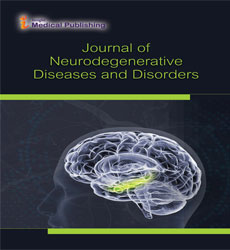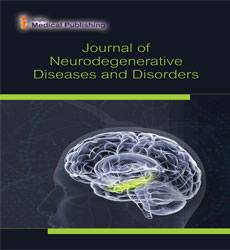Multiple System Atrophy: Signs and Symptoms
Deepak Chitkara*
Department of Pharmacy, Birla Institute of Technology and Science (BITS)-Pilani, Rajasthan, India
- *Corresponding Author:
- Deepak Chitkara Department of Pharmacy, Birla Institute of Technology and Science (BITS)-Pilani, Rajasthan, India, Email: deepak.chitkara@pilani.bits-pilani.ac.in
Received: December 03, 2021; Accepted: December 17, 2021; Published: December 24, 2021
Citation: Deepak C (2021) Multiple System Atrophy: Signs and Symptoms. J Neurodegenero Dis Disord Vol.4 No.1: e005.
Introduction
Different Framework decay (MSA) is an interesting neurodegenerative disorder characterized by spontaneous fractures, tremors, sluggish growth, muscle instability, and back flexion (commonly known as parkinsonism) and ataxia. This is caused by damage between neurons in several parts of the brain including the basal ganglia, the olivary core, and the cerebellum. Many people affected by MSA experience a breakdown of the autonomic nervous system, which often appears as orthostatic hypotension, weakness, sweating, dry mouth and urinary retention and incontinence. Pediatric cerebral palsy is important and sometimes begins the clinical manifestation of the disease. Changed alpha-synuclein protein within the affected neurons can cause MSA. About 55% of MSA cases occur in men, with those first symptoms affected when he was 50-60 years old. In any case, those with MSA for the most part showed little response to the dopamine regimens used to treat Parkinson's disease and about 9% of MSA patients with seizures showed a real tremor in the parkinsonian pill movement. Disruption of normal muscle wasting. MSA in addition is not at all different from the general form of fractures, now often referred to as multiple organ deformities, as well as multiple organ deformities, the common fatal complication of septic shock and other serious illnesses or ulcers.
Symptoms and manifestations: Autonomic dysfunction, Parkinsonism (flexible muscle environment + / tremor and slow movement), cerebellar ataxia (Poor communication / mobility, dual vision). The distinctive combined MSA variability and Lewy physiological dementia may be similarly common.
Introductory presentation: The first well-known MSA indication of the presence of "akinetic-inflexible disorder" (e.g. a slow progressive onset of development that looks like Parkinson's disease) appeared to be 62% in the first exhibition. Other common symptoms initially include problems with balance (cerebellar ataxia) which is considered to be 22% in the first manifestation, followed by genitor-urinary manifestations (9%): all types of people often experience criticism, recurrence, vomiting, or failure. urination (nutrition). About 1 in every 5 MSA patients experience a fall in their first year of illness. In men, the main symptom may be erectile dysfunction. Women also reported a decrease in genital response
Genetic Genetics: Another review followed the link between genetic cancellation of genetic mutations and the development of MSA in a Japanese patient circle. The region in question includes the quality of SHC2 which, in rats and mice, appears to have some effect on the nervous system. The creators of this study estimated that there may be a link between SHC2 cancellation and MSA follow-up improvement. Our results show that the eradication of SHC2 quality is less important, the MSA events exposed more frequently in the US population. This is in addition to the Japanese experience published by Sasaki et al., A logical demonstration of disease variability in a variety of genetic backgrounds. “This review was not in an overly guaranteed MSA”, suggesting a genetic cause option.
Acknowledgments
The authors are thankful for the acceptance of the article and its publications in the journal.
Conflict of Interest
None of the authors have any conflicts of interest with this work.

Open Access Journals
- Aquaculture & Veterinary Science
- Chemistry & Chemical Sciences
- Clinical Sciences
- Engineering
- General Science
- Genetics & Molecular Biology
- Health Care & Nursing
- Immunology & Microbiology
- Materials Science
- Mathematics & Physics
- Medical Sciences
- Neurology & Psychiatry
- Oncology & Cancer Science
- Pharmaceutical Sciences
